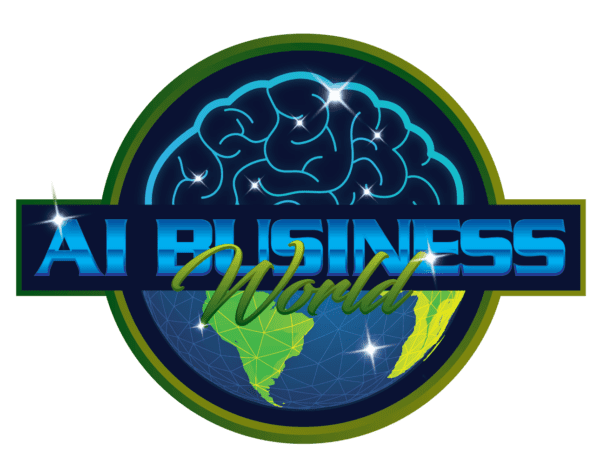AI Art for Beginners: Your Guide for 2024
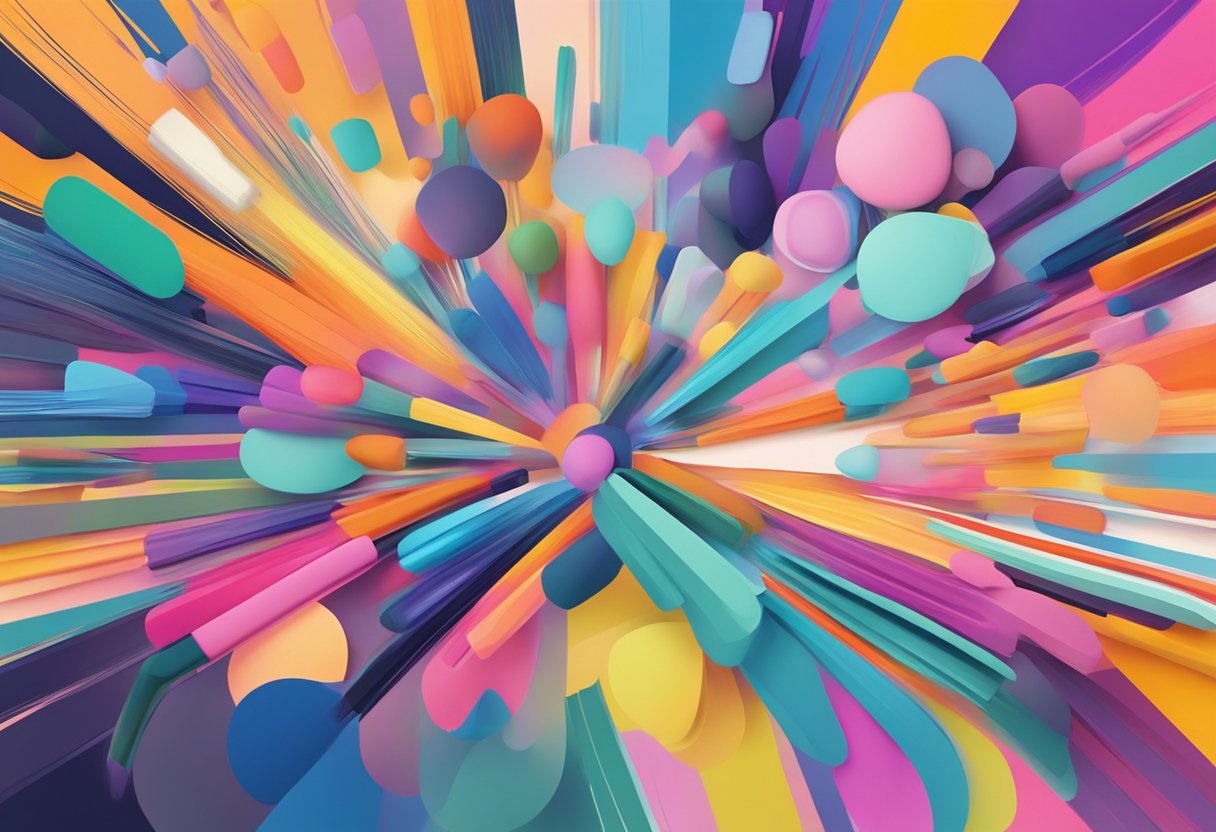
Art continues to evolve! Creating captivating AI art as a beginner is possible today. AI art offers an accessible entry point into the world of creativity. By using text prompts or guiding algorithms, users can generate pieces that range from surreal landscapes to intricate abstract patterns.
The essential appeal of AI-generated art lies in its blend of human intuition and machine efficiency. As the algorithms learn and evolve, they offer a collaborative partnership that can push the bounds of conventional art.
Understanding AI Art for Beginners

In the realm of creative expression, AI art represents a fusion of technology and aesthetics. It marks a significant shift in how art is produced and perceived.
History of AI in Art
The intersection of artificial intelligence and art is not just a recent phenomenon. Early experiments date back to the 1960s, with pioneering systems like AARON by Harold Cohen. One should note that AI in art has evolved from primitive algorithms to complex neural networks capable of producing intricate visual pieces.
Defining AI-Generated Art
AI-generated art is characterized by the collaboration between humans and algorithms. The human provides a concept or a text prompt, and the AI utilizes pattern recognition and generative models to create new visuals. The uniqueness of AI-generated art lies in its unpredictability and the capacity to unlock new styles and forms, reflecting human creativity augmented by AI capabilities.
Tools and Hardware

Exploring the realm of AI art requires specific tools and materials to get started. These tools include sophisticated software for the creation process and compatible hardware to support the software’s demands.
Disclaimer: This article contains affiliate links where we may receive a small commission at no extra cost to you, if you purchase through the link. For more information read my Disclosure.
Software for AI Art Creation
When beginners start creating AI art, they should consider which AI art generator software to use. Options range from free tools to paid tools that provide quick image creation to more complex platforms that offer detailed customization.
Some of the Best AI Art Software:
Hardware Requirements
To efficiently run AI art software, one needs hardware capable of handling intensive computational tasks. Beginners may not need the most advanced setup, but they require a reliable and relatively powerful system.
Basic Hardware Recommendations:
- CPU: Quad-core 2.0GHz or higher
- RAM: Minimum 8 GB
- Storage: SSD with at least 256 GB capacity for faster data access
Getting Started with AI Art

Embarking on the journey into AI art begins with understanding the core concepts and ensuring you have an effective workspace set up. This section aims to clarify the foundational elements and prepare you for creating with AI.
Basic Concepts and Terminology
- AI Graphic Design Art Generator: A tool that uses artificial intelligence to create images based on textual prompts.
- Prompt: A text input given to an AI generator that describes the desired image.
- Model: Refers to the algorithm or set of rules the AI uses to create art.
When one is first introduced to AI-generated art, terms like “neural networks” and “generative adversarial networks” often come up. These are types of AI models that learn from vast datasets to produce new, original art. To effectively utilize an AI art generator, one should be familiar with how prompts guide the AI to produce images that align with the artist’s vision.
Setting Up Your Workspace
The workspace for creating AI art doesn’t require traditional art materials but does necessitate a few digital essentials:
- Computer: A machine with sufficient processing power and internet connectivity.
- Software: An AI image generator program or access to an online service.
To set up your workspace for generating AI art, ensure that your computer meets the minimum specifications required by the AI art software. If opting for online AI art services, a stable internet connection is crucial.
AI Art Prompts for Beginners
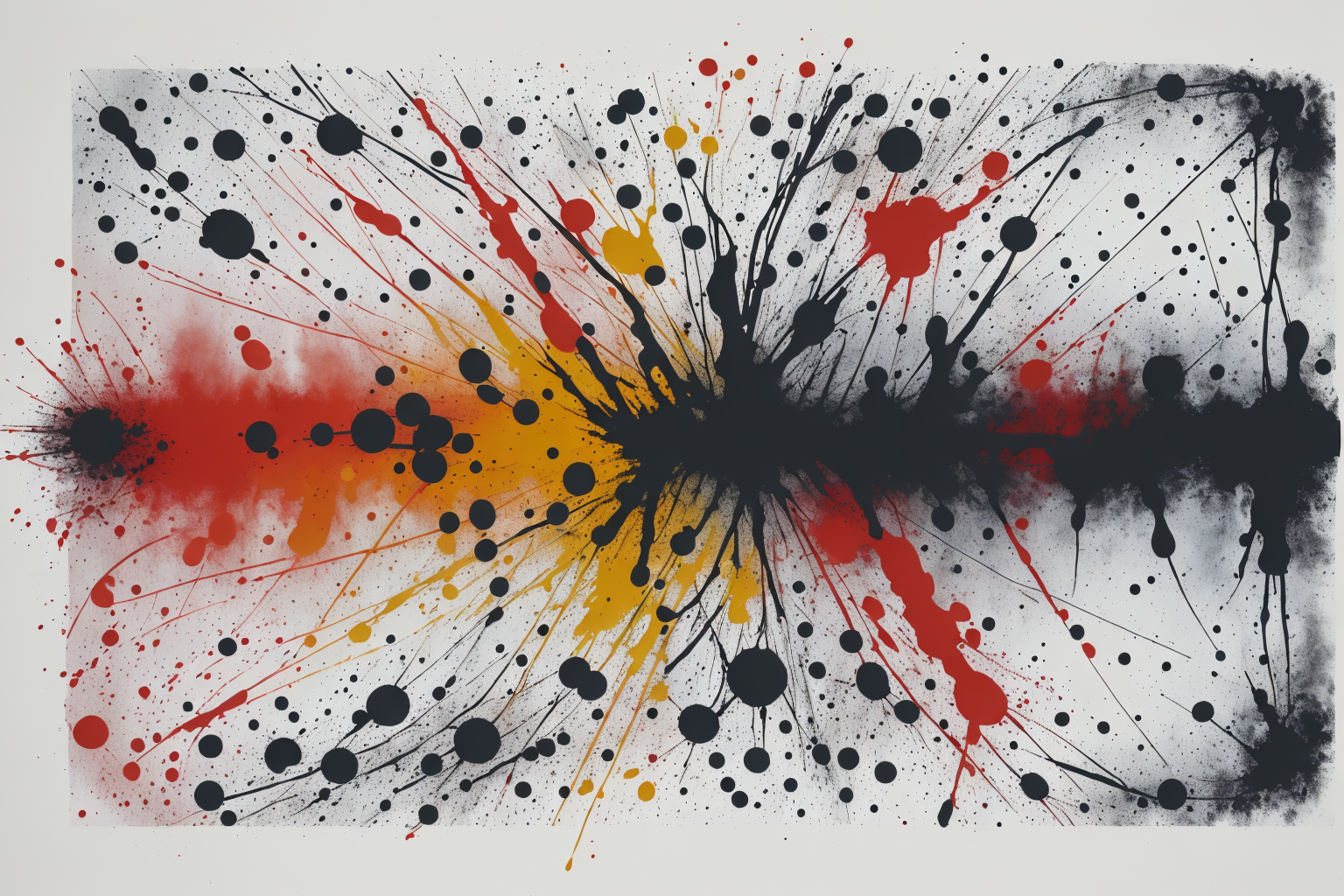
Photo Created with getimg.ai from the prompt “an abstract painting in the style of Jackson Pollock”
AI art prompts are the creative inputs given to an artificial intelligence program designed to generate visual art. These prompts can range from simple instructions specifying subjects, styles, or themes to more complex and abstract concepts that challenge the AI to interpret and visualize ideas in unique ways.
The role of prompts in AI-generated art is crucial, as they serve as the foundational guide for the AI to follow, much like a brief to an artist.
The versatility of AI art prompts has opened up a world of possibilities for both seasoned artists and those without a traditional art background.
Experiment for Artistical Expression
By providing an AI with a prompt, users can experiment with a vast array of artistic expressions, including mimicking the styles of famous painters, generating fantastical landscapes, or even creating visual representations of emotions or dreams.
One of the fascinating aspects of using prompts for AI art is the element of surprise in the outcomes. While the AI attempts to interpret the prompt as closely as possible, the resulting artwork often contains unique and unexpected elements that can inspire further creativity. This serendipitous aspect of AI art generation makes it an exciting tool for artistic exploration and innovation.
Moreover, AI art prompts are not just a tool for individual creation but have also become a means for community engagement and collaboration.
Examples of AI Art Prompts
AI art prompts can be as varied and imaginative as one desires. Here are a few examples to illustrate the range of prompts one might use to generate AI art:
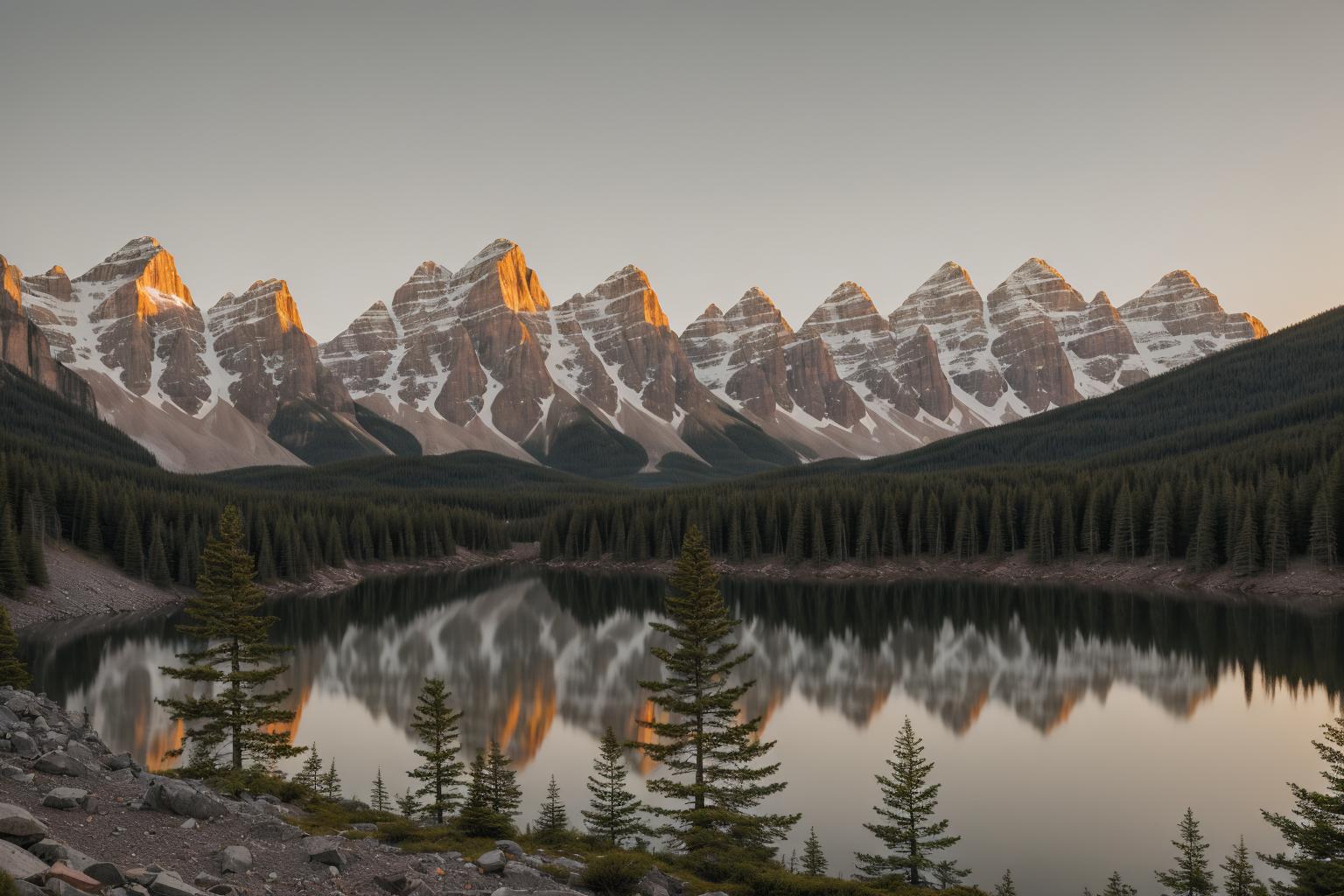
Simple Descriptive Prompts:
- “A serene mountain landscape at sunrise.” (Image above created with getimg.ai)
- “A portrait of a woman with flowing hair in the Art Nouveau style.”
- “A still life of vintage objects on a wooden table.”
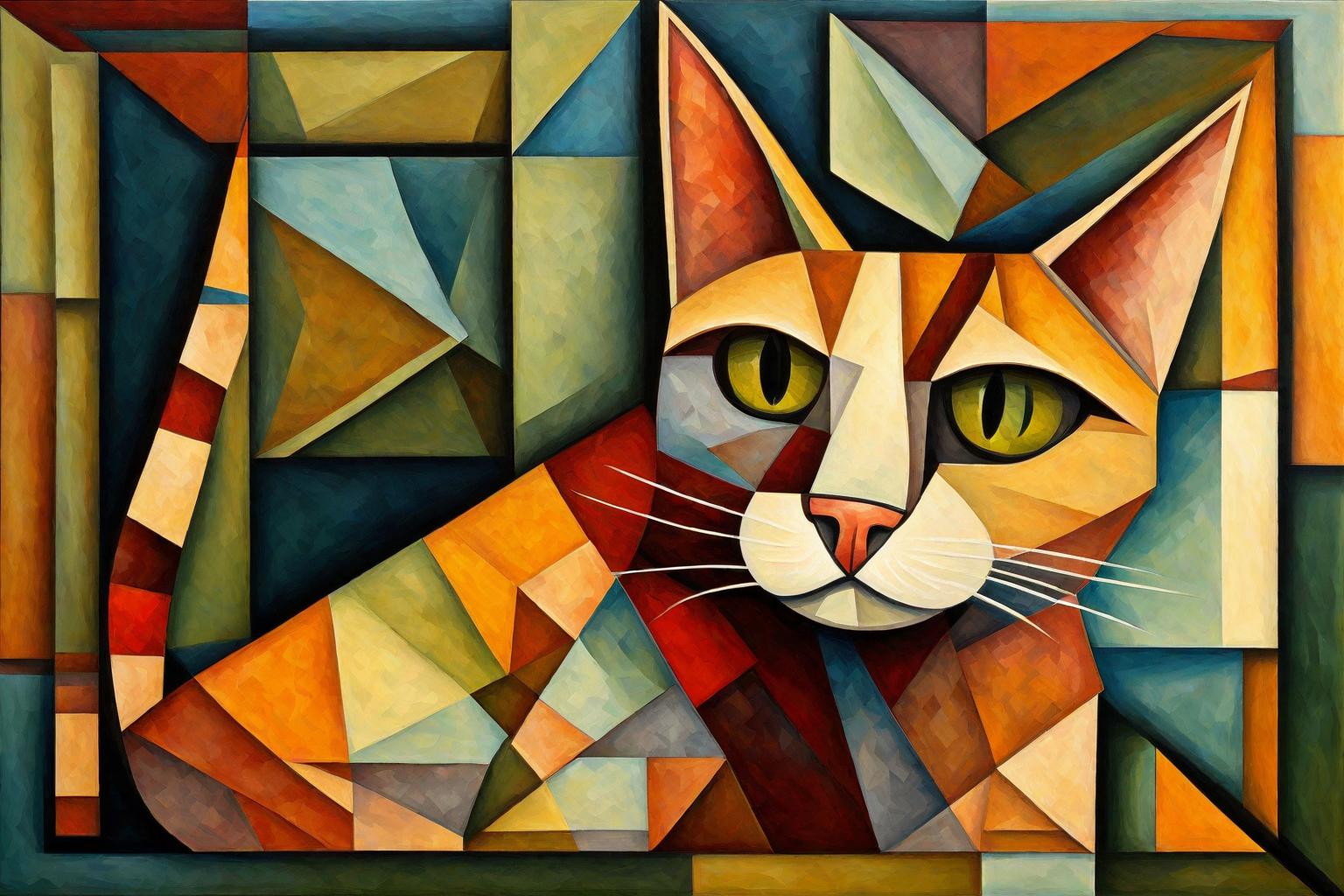
Style-Specific Prompts:
- “A cubist interpretation of a cat.” (Image above created with Limewire)
- “An abstract painting in the style of Jackson Pollock.”
- “A street scene in the Impressionist style of Claude Monet.”
- “A pop art version of a classic video game character.”
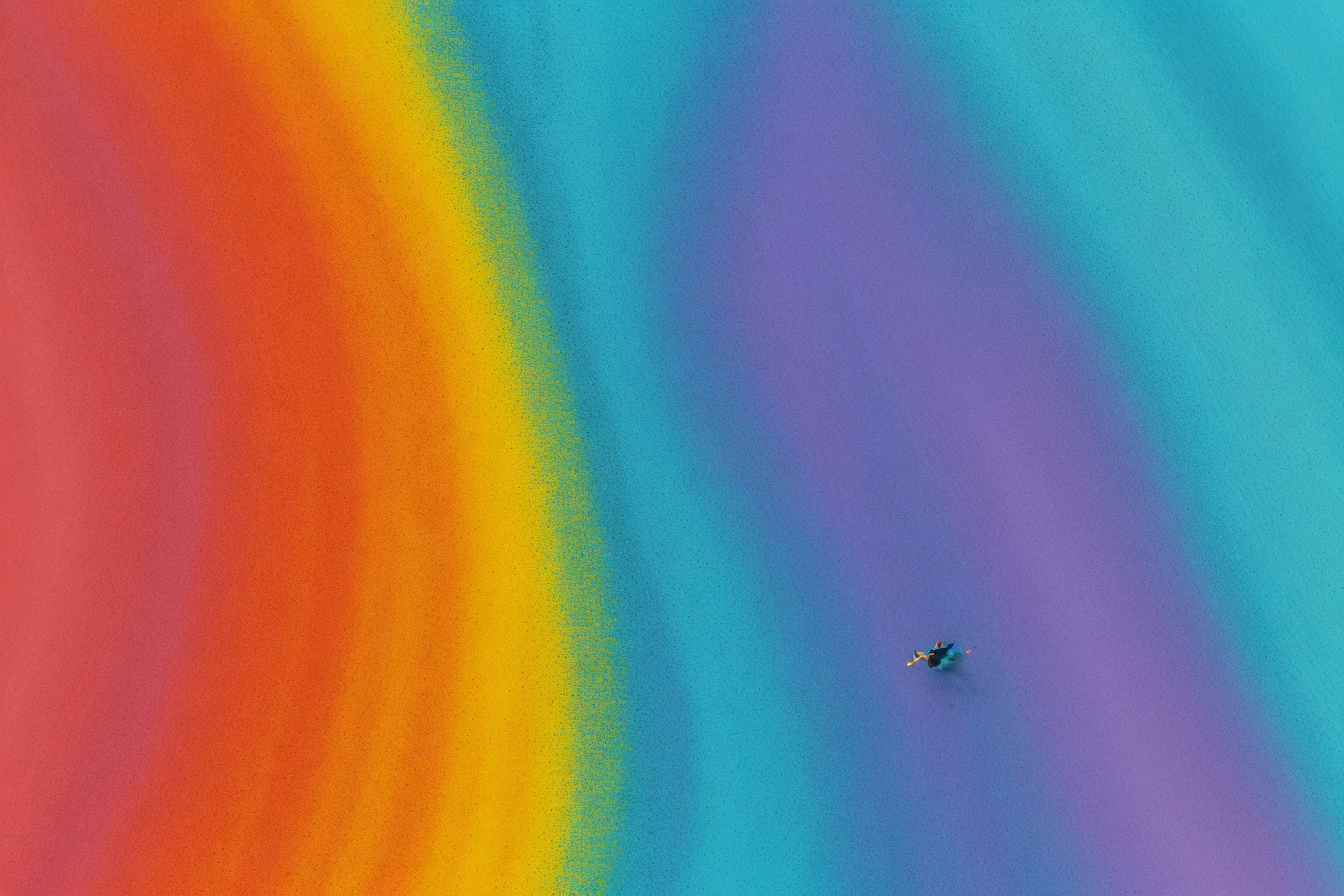
Conceptual Prompts:
- “The embodiment of joy as an abstract composition.” (Image above created with getimg.ai)
- “The clash of order and chaos in a symbolic artwork.”
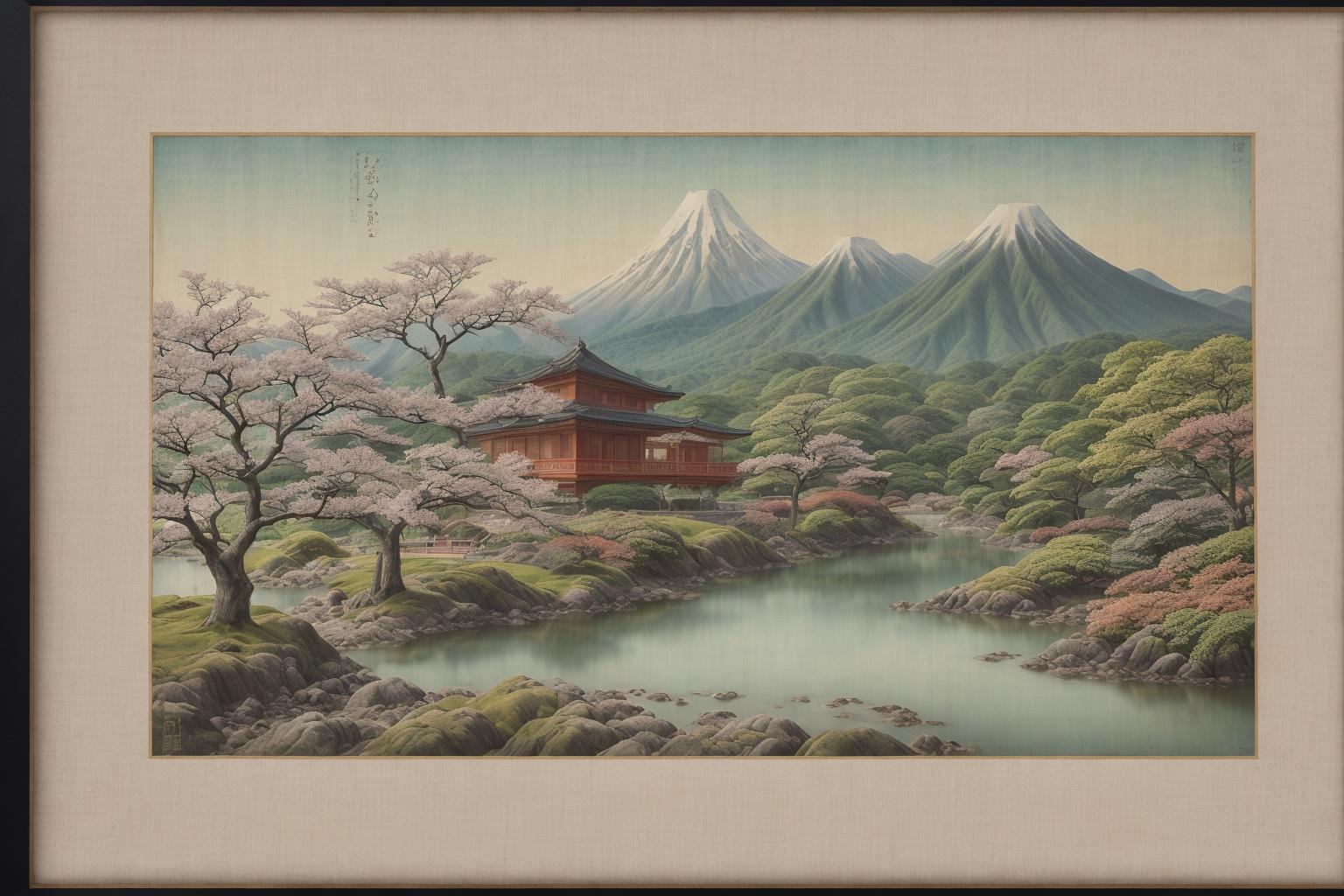
Historical or Cultural Prompts:
- “A landscape painting that incorporates elements of traditional Japanese ukiyo-e prints.” (Image above created with getimg.ai)
- “A scene from a Shakespearean play in a Renaissance painting style.”

Emotion or Sensory Prompts:
- “The feeling of solitude in a vast desert, visualized.” (Image above created with Limewire)
- “A visual symphony of euphoria and energy.”
- “The texture of velvet captured in a visual form.”
These examples demonstrate the flexibility of AI art prompts, which can be tailored to the user’s intent, whether it’s to create something specific and representational or to explore abstract and conceptual ideas. The AI’s interpretation of these prompts can result.
The Creative Process

The creative process in AI art involves leveraging technology to transform ideas into visuals. Here’s a look into how artists find their muse and cultivate a unique digital aesthetic.
Finding Inspiration
Artists often begin by seeking out sources that spark creativity. This can include anything from nature, historical artwork, or current trends in the art world. Inspiration can strike through a multitude of avenues, including browsing online galleries or using tools specifically designed to ignite the artistic spark.
Developing a Style
Once inspirations guides an artist, the next step is to develop a consistent style. This involves defining characteristics like color palettes, themes, and the emotion they wish to evoke. Artists refine their approach through a process of trial and error, using tools and techniques such as:
- Parameter Adjustments: Experimenting with settings within AI programs to alter the detail, contrast, and style of the output.
- Prompt Crafting: Becoming skilled at writing detailed prompts to guide the AI, discovering what terms and descriptions yield the desired result.
- Feedback Loops: Iteratively adjusting input and reviewing the output to hone the AI’s performance to match the envisioned style.
Legal and Ethical Considerations

In the realm of AI art, creators must navigate complex legal frameworks and confront ethical dilemmas. Clarity on copyright laws and the implications of AI’s involvement in the creative process is crucial.
Understanding Copyright Laws
Copyright laws are an important consideration for anyone involved in AI-generated art, as they protect the legal rights of creators. However, when art is created with the assistance of AI, determining authorship can be complicated.
Traditionally, copyright ownership belongs to the human creator, but AI-generated art blurs these lines, raising the question: who holds the copyright — the human operator, the software developer, or the AI itself?
In some jurisdictions, the copyright laws have not yet fully caught up with the advancements in AI, leading to areas of uncertainty. For instance, most copyright laws do not explicitly address whether AI can hold copyrights, leaving a grey zone for artists and programmers. As described on Harvard’s JOLT, when drafting license agreements or resolving disputes involving AI art, specific attention is necessary to address these complexities.
Ethical Implications of AI Art
Ethical concerns are equally critical when discussing AI-generated art. They primarily manifest in two areas: originality and the potential impact on human artists. AI art raises profound questions about the nature of creativity and originality since it often involves remixing existing artworks to create something new. This might challenge the value of an artist’s original work and could potentially reduce opportunities for human artists.
In addition, the ethics of data use in training AI systems are pivotal. AI art generators are commonly trained on large datasets that might contain copyrighted works, and this raises concerns regarding consent and proper compensation for original creators.
Insights from the World Economic Forum emphasize the ambiguity surrounding these technologies, prompting public discourse on establishing guidelines that respect creative expression while fostering innovation.
How can I Learn AI Art?

Learning AI Art involves diving into practice while also engaging with a community that shares knowledge and experience. Both hands-on experimentation and community interaction are pivotal for a beginner to navigate the nuances of AI-driven creativity.
Practice and Experimentation
The first step is to get familiar with AI art generators. Beginners should enter a text prompt to initiate the creative process, then experiment with different styles and parameters. Iteration is key; each attempt provides valuable insights into how AI interprets commands and how to steer the results closer to the desired outcome.
- Key Actions:
- Try: Experiment with various prompts and settings.
- Analyze: Review the generated art to understand the AI’s interpretation.
- Modify: Adjust prompts and settings based on the analysis for improved outcomes.
Learning From the Community
Beginners can enhance their learning curve by engaging with others within the AI art community.
- Community Resources:
- Forums and Groups: Online forums and social media groups provide a space for advice and feedback.
- Tutorials and Guides: Detailed AI art tutorials offer structured learning paths from basic to advanced levels.
- Showcase and Share: Presenting work and receiving constructive criticism accelerates improvement.
Showcasing and Selling AI Art

When venturing into the realm of artificial intelligence art, artists must emphasize showcasing their work effectively and understanding the nuances of online sales.
Building an Online Presence
Artists should prioritize creating a compelling digital portfolio, which serves as an essential tool in attracting potential buyers and galleries. It’s critical to include a selection of your best AI art and provide easy navigation for viewers. To sell AI art, one should harness the power of social media platforms and a personal website to reach a broader audience and engage with buyers.
Navigating Art Markets
Navigating art markets requires a strategy tailored to AI artwork. Artists must select the right platforms that cater to digital and AI art. Participation in reputable art marketplaces can significantly increase visibility and sales potential. Understanding pricing and licensing rights is also vital to manage one’s artwork effectively in these spaces.
Future Trends in AI Art

As AI art continues to evolve, significant advancements in technology and shifts in cultural reception are expected to shape its trajectory.
Emerging Technologies
AI Algorithm Improvements: Iterative enhancements in AI algorithms will allow for more complex and nuanced artwork. These technologies will enable artists to experiment with novel combinations of styles and techniques that were previously unattainable.
Integration with Other Media: Technologies such as virtual reality (VR) and augmented reality (AR) are poised to converge with AI art generators. Artists may create immersive experiences that blend physical and digital realities.
Cultural Impact
Broader Accessibility: The democratization of AI art tools will offer more individuals the ability to create art, potentially leading to a surge in digital creativity across various demographics.
Intellectual Property Discussions: Legal and ethical considerations regarding ownership and copyright will become increasingly prominent as AI art becomes more mainstream. This conversation will influence how AI-generated art is legislated and perceived within the art community.
Final Thoughts: As AI art continues to evolve and software continues to improve, it is becoming easier than ever to create art. AI software can significantly improve time to produce and lower costs for graphic design.
